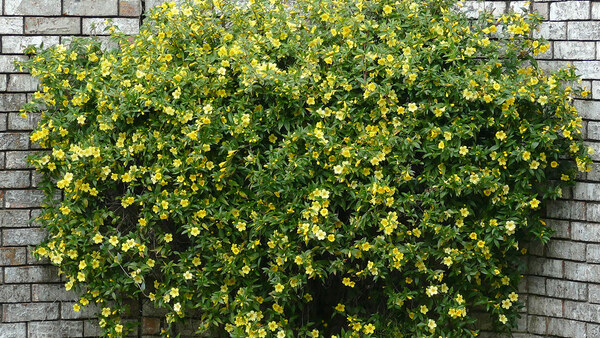
When my budding interests in horticulture started developing in junior high school, I came across Hortus Third, an encyclopedic tome of horticulture compiled in the 1970s. Learning about plants from my dad while working on landscape installations, and then looking them up in Hortus Third after hours, I developed a sense of wonder about plant diversity both in the natural world and in cultivation in our gardens and landscapes. How could a genus described in Hortus Third such as Michelia (later reclassified as Magnolia) have “about 50 species of evergreen trees and shrubs” but only eight listed? What about the other 42 species? Were they unworthy of cultivation, or had we simply not tried the other ones yet? With many genera, the latter often proves to be the case. It turns out that the world of horticulture often overlooks many worthy plants.

Smallhead doll’s daisy is a more well-behaved alternative to white doll’s daisy
A perfect example of this phenomenon is smallhead doll’s daisy (Boltonia diffusa, Zones 5–9). There are seven recognized species of Boltonia, six being native to the United States and the seventh one from eastern Asia. All are herbaceous perennials known for their profusion of mostly white daisylike flowers. For the longest time only white doll’s daisy, or false aster (Boltonia asteroides, Zones 3–10), was known and grown. In southern U.S. gardens, white doll’s daisy flops over and makes a less than pleasing garden subject, despite being native from southern Canada southward to the Gulf Coast. In 2015, landscape architect Tres Fromme from Sanford, Florida, brought another species to my attention, one that was not mentioned in Hortus Third. Smallhead doll’s daisy is native to the southeastern and south-central United States. Tres used this plant in designs at Atlanta Botanical Garden, and it has grown spectacularly well there. We decided to try it at Tulsa Botanic Garden, where I was working at the time. To say it performed beautifully would be an understatement. To know that I later discovered it growing as a native perennial in a rock quarry in southern Oklahoma only served as one of those serendipitous and yet seemingly preordained moments. As Darth Vader might say, I was destined to grow this plant.

This plant has a long bloom period and is extremely easy to grow
If, like me, you admire using “see-through” plants in your garden, then look no further. Southern doll’s daisy is a plant that (a) looks good when not in bloom, (b) stands its ground in the garden without taking over, (c) does not flop over to touch the soil when it comes into bloom, and (d) is easy to grow—just add soil. This perennial blooms from approximately July through November, with yellow disc flowers and ray flowers that are white to light purple. It takes full sun and can grow in moist or dry soil. It can reach an impressive size, up to 6 feet tall and about 4 feet wide.
Southern doll’s daisy displays a verdant mass of wiry stems adorned with small leaves, and late summer brings a frothing show of usually white flowers that looks a little like baby’s breath (Gypsophila spp. and cvs., Zones 3–9) but are so much better. Smallhead doll’s daisy beckons for its own attention, while also acting as a unifying element in the garden. Even when going to seed this plant does so discreetly, not turning its reproductive parts brown at the tips like other aster relatives often do. Tough and drought tolerant—it looked perfectly fine in the Oklahoma rock quarry scree fields—and yet responding beautifully to cultivation in enriched soils, this overlooked native proves my old view from days of thumbing through Hortus Third: we need to keep trying the “other” species beyond the ones we already know and grow.
For more great native plants for the Southeast, check out:
- Five Native Shrubs for Moist Spots in the Southeast
- Great Native Plants for the Southeast
- The Best Black-Eyed Susans for the Southeast
And for more Southeast regional reports, click here.
—F. Todd Lasseigne, Ph.D., serves as executive director of Bellingrath Gardens and Home, a public garden and historic home in Theodore, Alabama.
Fine Gardening Recommended Products

Gilmour 5/8" x 25' Round Weeper Soaker Hose
Fine Gardening receives a commission for items purchased through links on this site, including Amazon Associates and other affiliate advertising programs.

Hunter Industries MP-1000-90 Hunter Nozzle
Fine Gardening receives a commission for items purchased through links on this site, including Amazon Associates and other affiliate advertising programs.
- Double-pop technology flushes the nozzle during start-up and shutdown to prevent clogging
- Wind-resistant, multi-directional streams provide even coverage

Nesco Snackmaster Express Food Dehydrator
Fine Gardening receives a commission for items purchased through links on this site, including Amazon Associates and other affiliate advertising programs.


















Comments
Log in or create an account to post a comment.
Sign up Log in